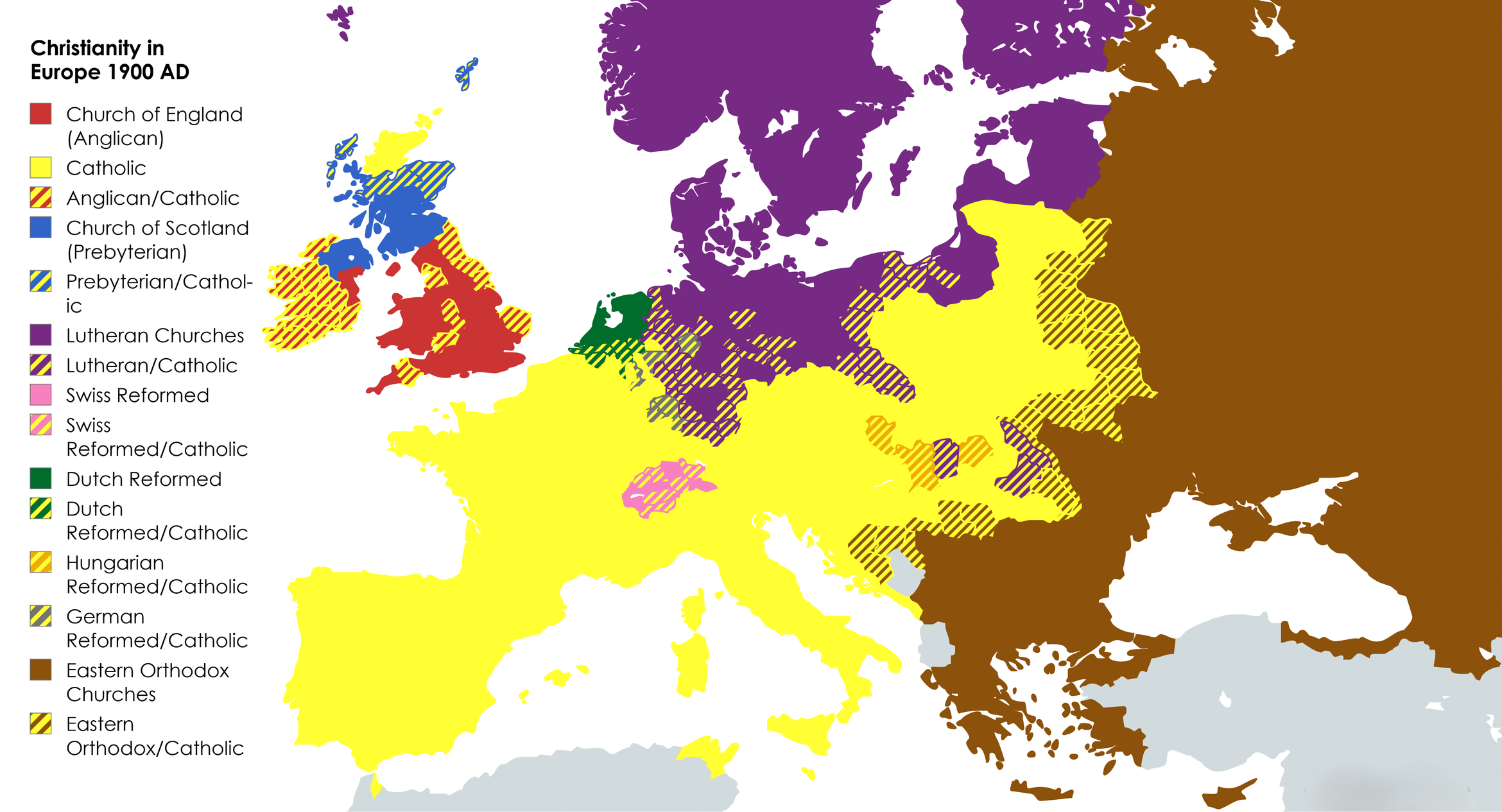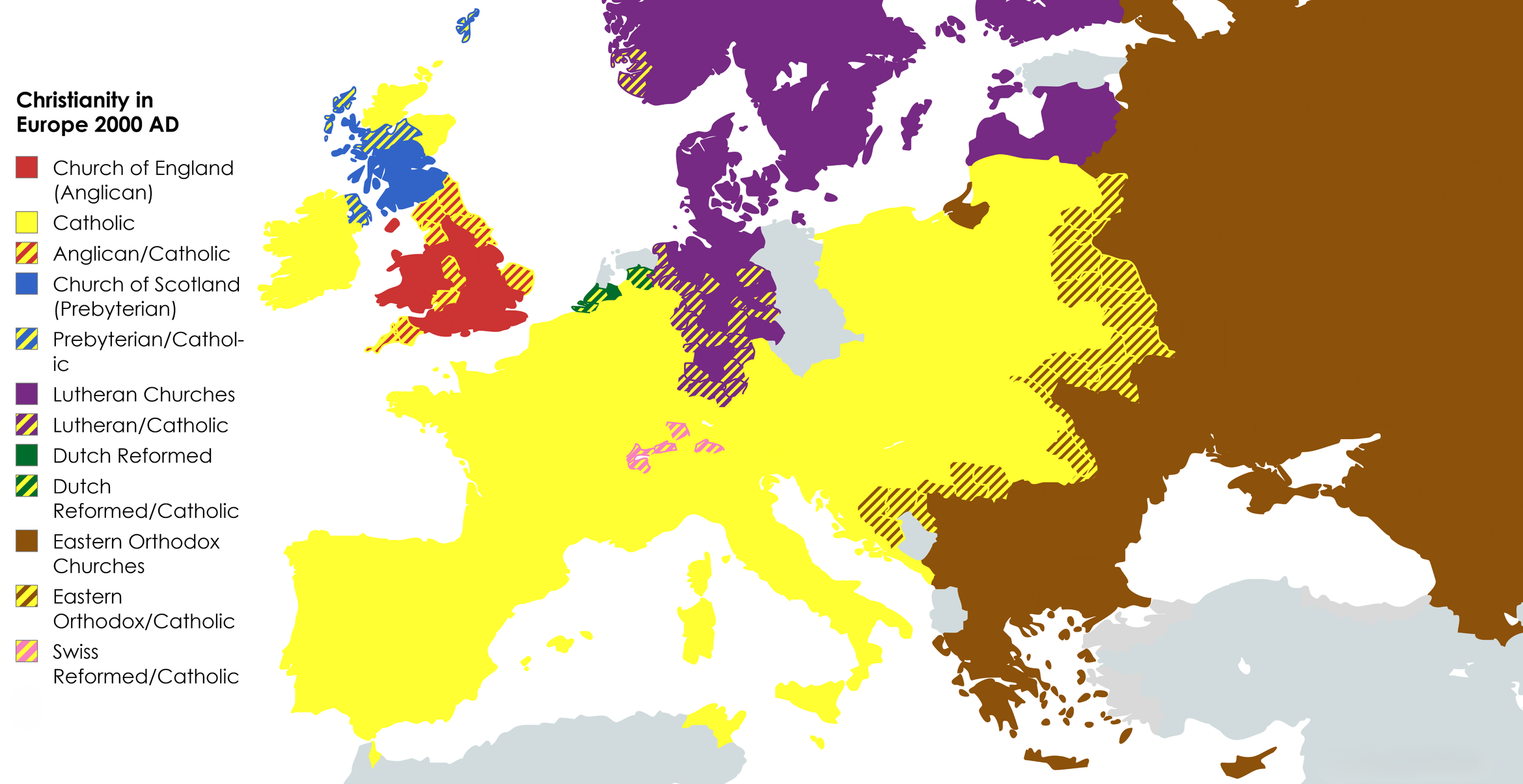The Demise of the Eastern Roman Empire: 1200-1453
The Eastern Roman state, also known to history as the "Byzantine Empire", had a slow end following the attack by the armies of the 4th Crusade. The Paleologian dynasty was able to secure the continuity of the empire when Michael VIII took the throne of the Empire of Nicaea in 1259. His political maneuvering with the Senate, the Frankocratia, and the Roman Catholic Church maintained the continuity of these institutions, albeit for a few more generations. His capture of the city of Constantinople in 1261, and the expansion of Roman authority back into the Balkans was seen as a watershed moment in the restoration of the Eastern Empire. However, the prior financial mismanagement of the city under the Latin Empire made economic recovery an impossibility. Moreover, the rise of the Ottoman Turks in 1299, the political power of the trade republics of Genoa and Venice, and sundry dynastic civil wars, made the possibility of a sustained recovery impossible. Gradually the Greek heartland of the empire was divided and became absorbed by the growing power of the Turkish state, which eventually established themselves in the city of Adrianople, before moving on to the coup de grace, and absorbing the imperial capital itself in 1453.











Mediterranean Religion 700-1000 AD
Following the wars on conquest by the Caliphate, the face of Abrahamic religion shifted over the centuries directly proceeding the Latin Crusades. Regions which had historically been tied to the foundations of Christianity (Syria, North Africa, Mesopotamia), gradually developed Arab Muslim majorities. Certain nations appear to be partially impervious to this, such as Egypt, which has maintained a large Coptic Christian population for the last fourteen centuries. Other areas, such as Himyar and Carthage, entirely shifted, particularly with the large scale destruction of Punic cities along the coast, and subsequent Arab colonization. For this reason, re-constructing the historic face of the Punic church is very challenging, as native Christian sources are limited after the 8th century. Arab Christians also become a historical puzzle, as large populations appear to simple vanish from the historic record after the 7th century, such as with the Christians of the city of Najran in Southern Arabia, or that of the Ghassanid. The Orthodox/Catholic divide is perhaps an anachronism, as this does not officially take place until the mutual anathema in 1054. However, the roots of that divide are in the Roman-Constantinoplian jurisdictional division which was present several centuries before the schism became de facto.
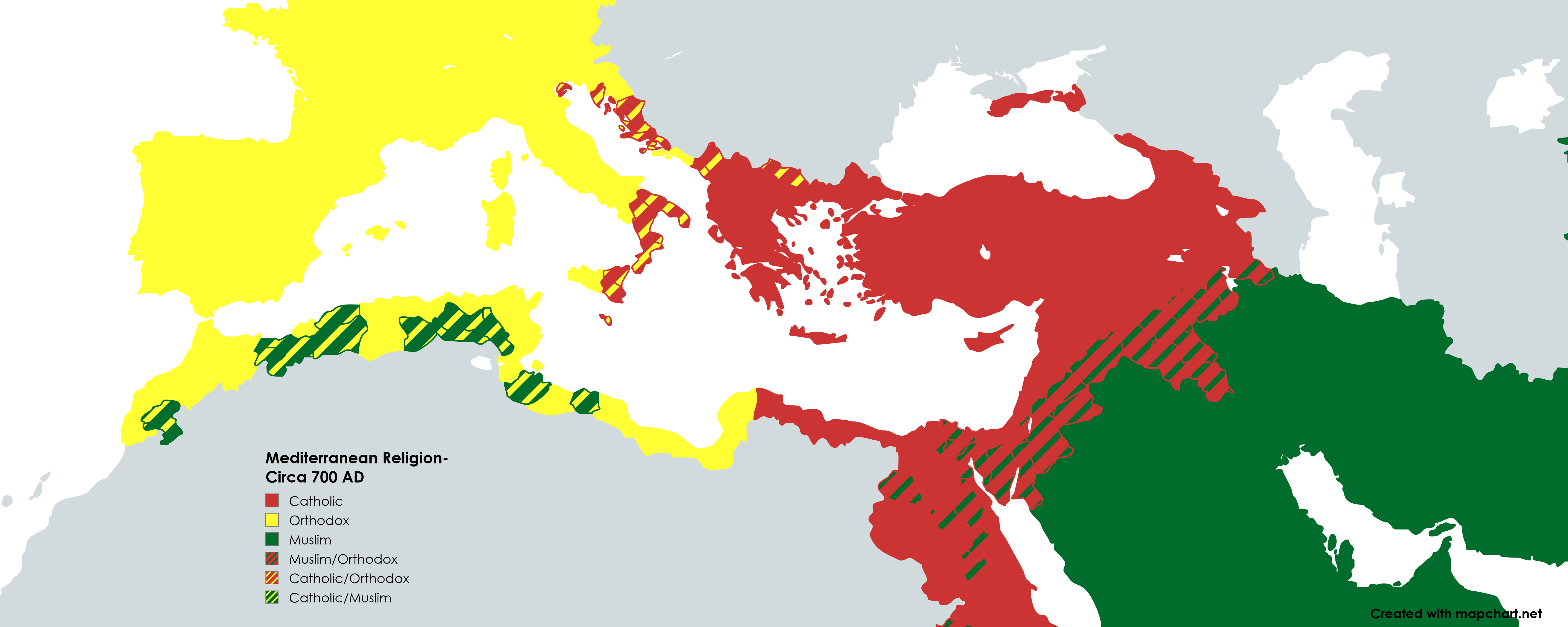
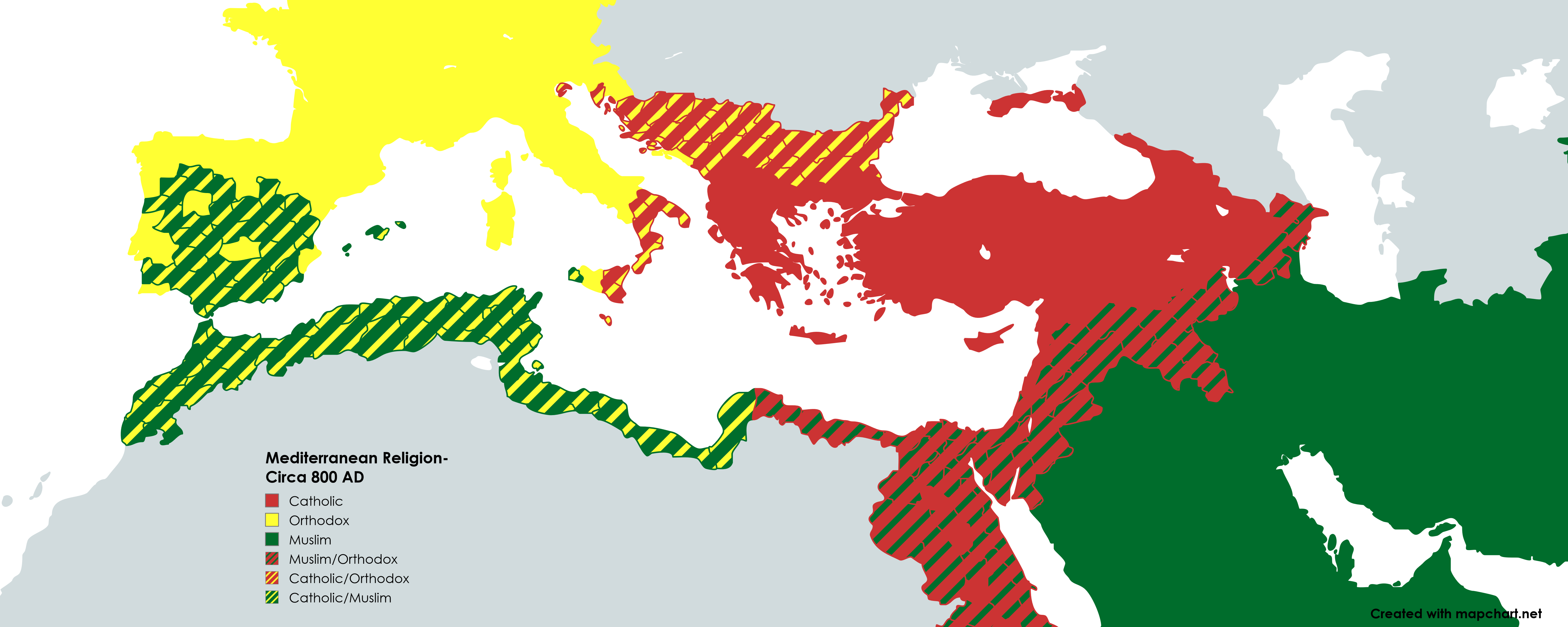
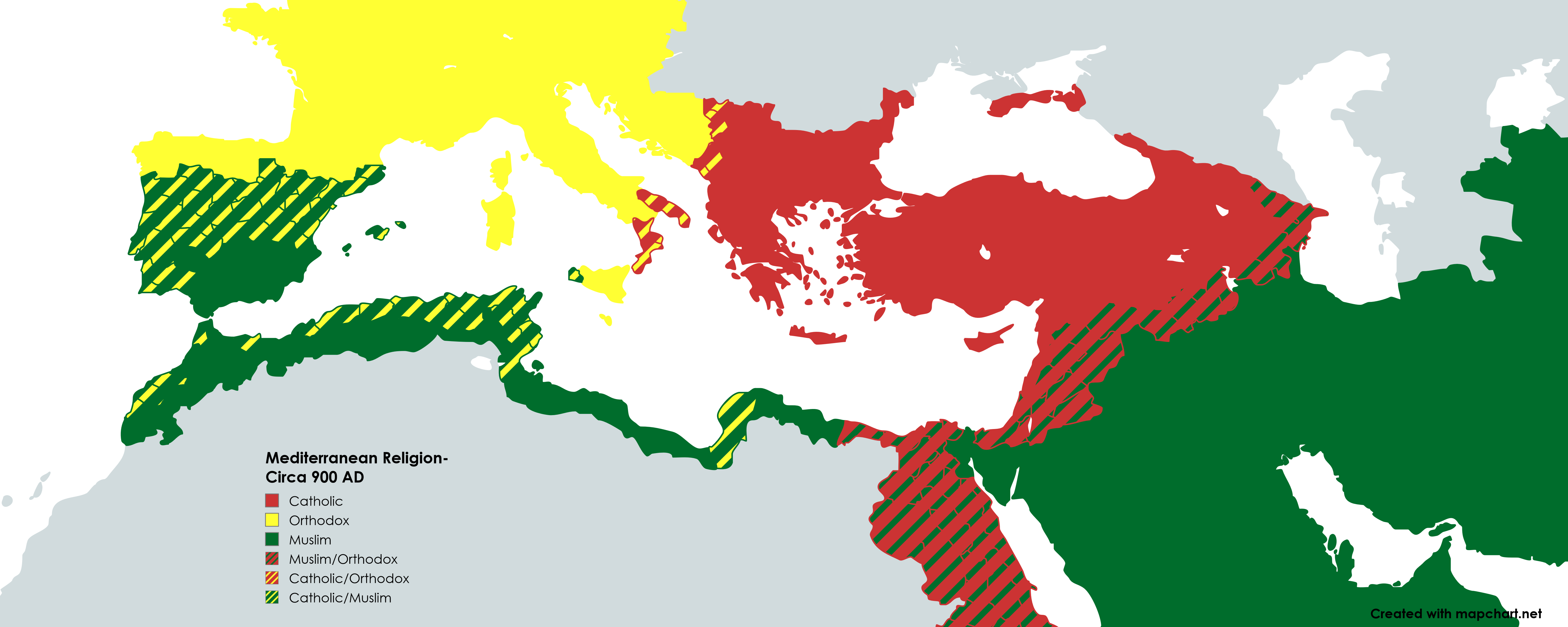
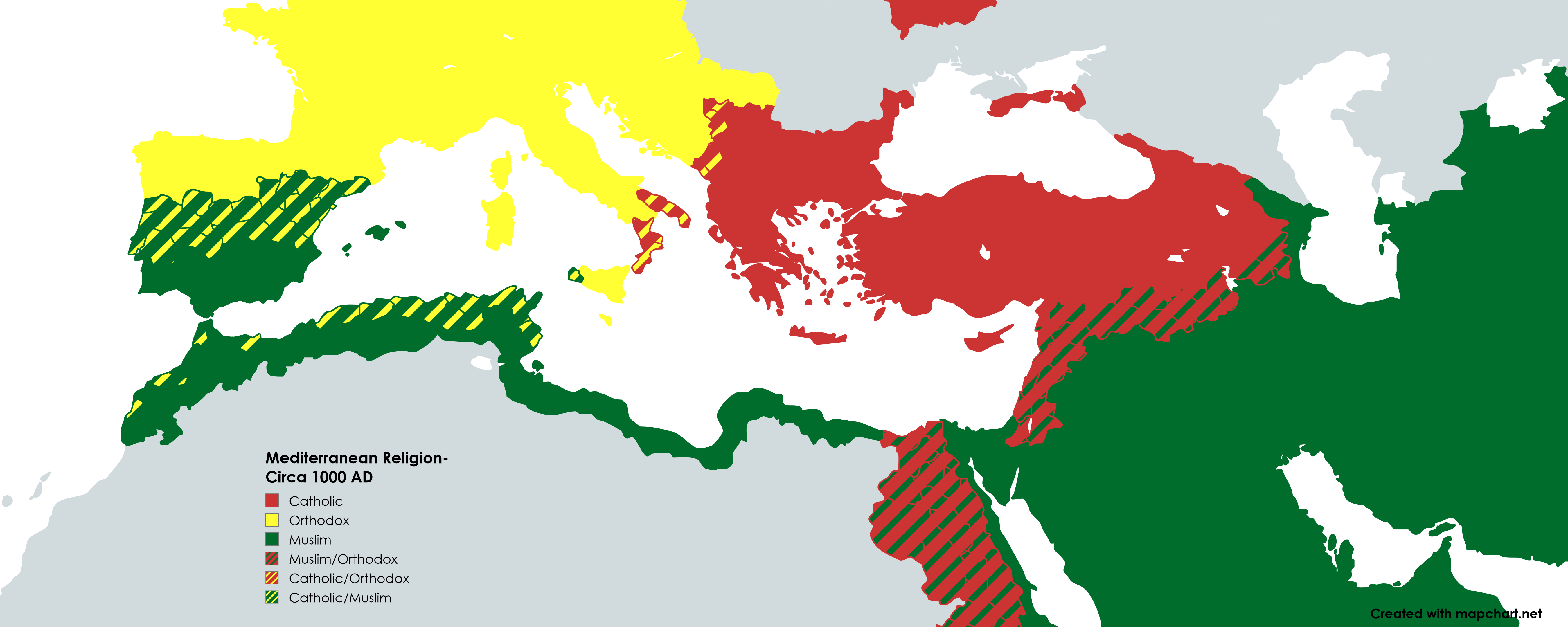
patriarchs of the undivided church
The Pentarchy- 565 AD, 870 AD
The pentarchy as a theory of church government that is maintained by the Eastern Orthodox Communion, but rejected by Roman Catholics. The distribution of the jurisdiction of its respective patriarchs shifted with time and eventually would give rise to political contests between east and west.
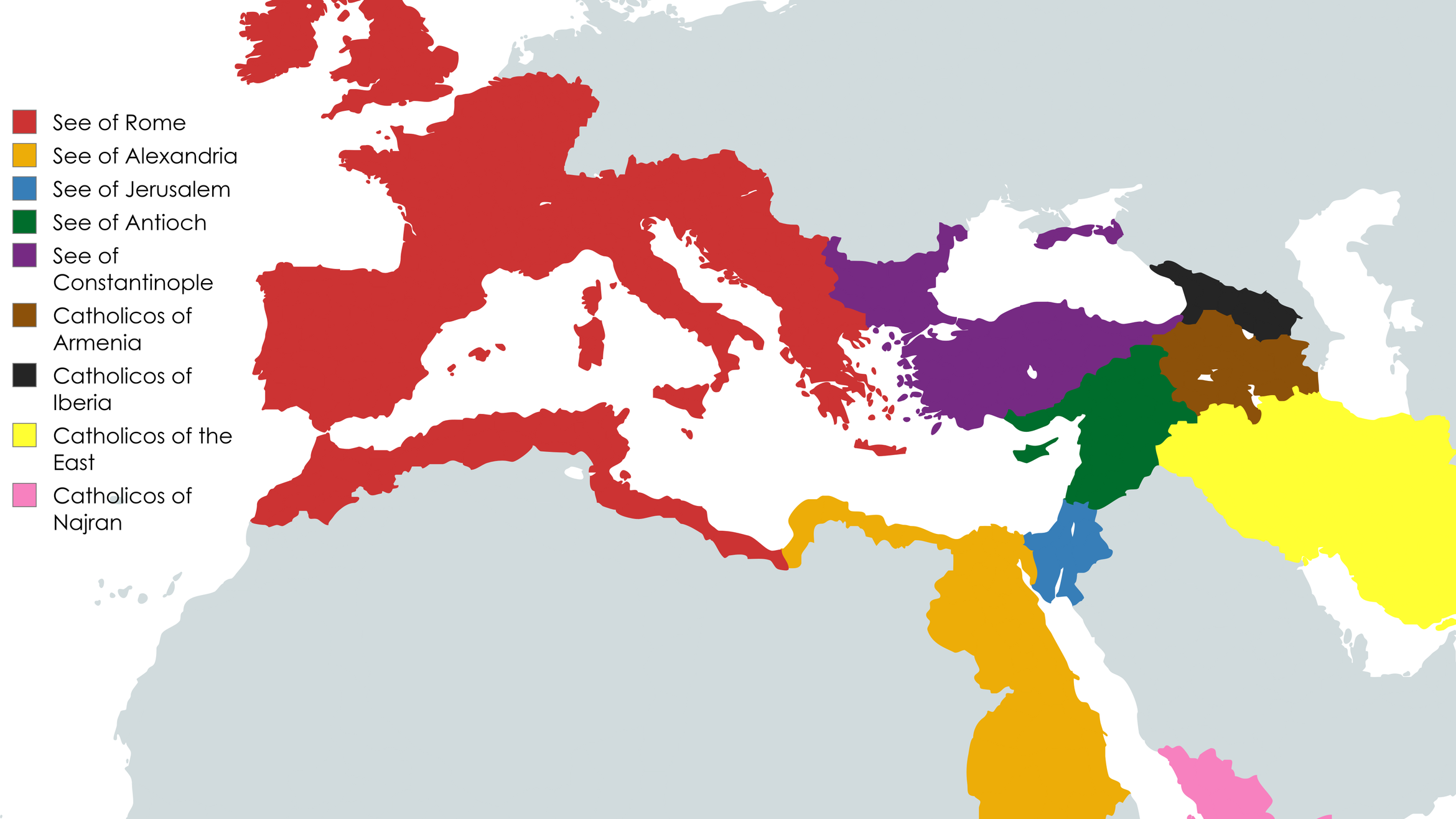
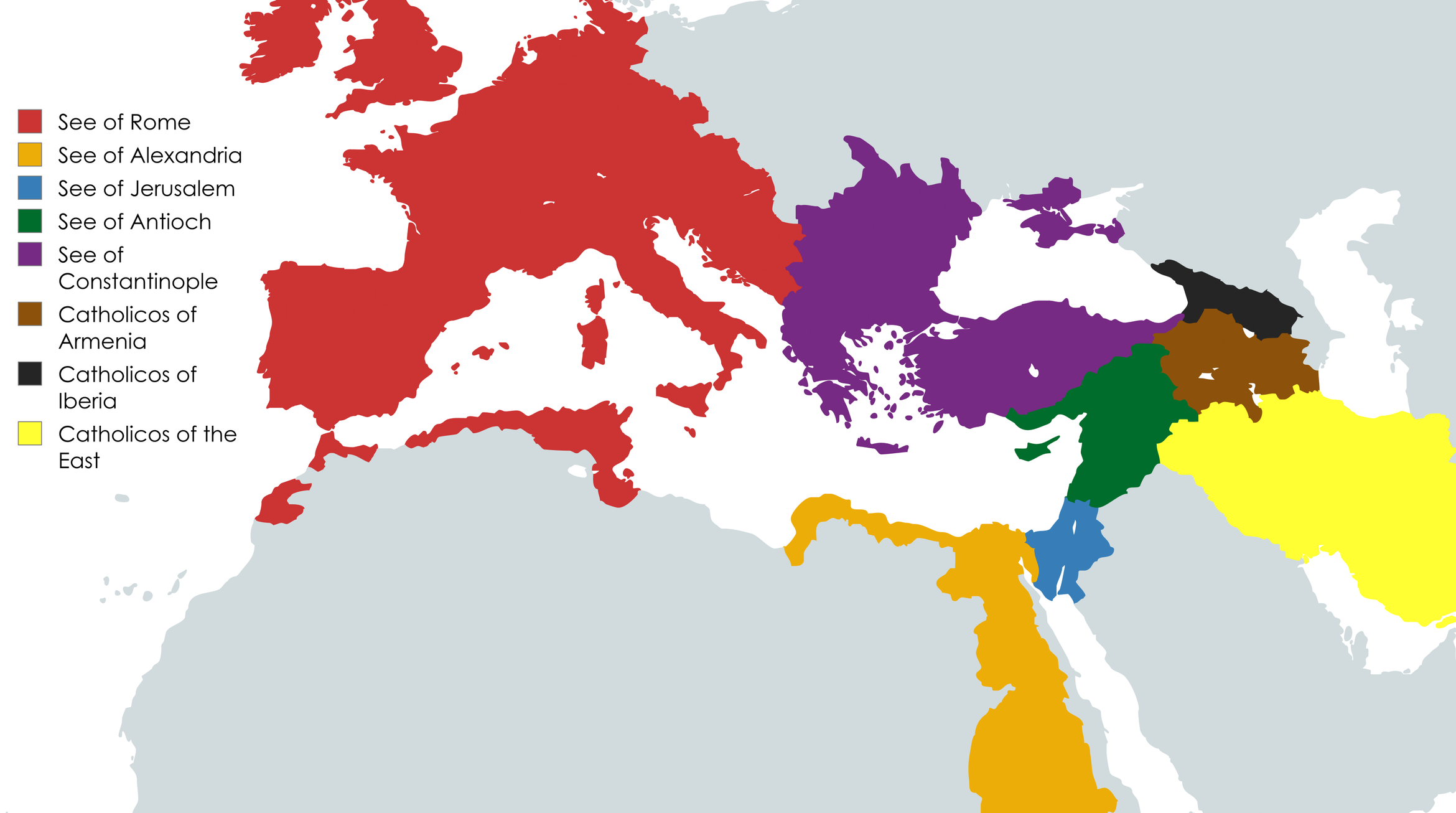
Late byzantine empire
The Greco-Turkish Shift in Anatolia
The Greek assimilation of the various cultural groups in Asia Minor took several centuries, but the collapse of Greek identity in the region took several centuries with the coming of the Turkish tribesmen. Moreover, other salient regional groups also became obscure with the passing of centuries and the rise of Ottoman political dominance. This would lose in the culmination of Greek and Armenian culture throughout Asia Minor, and serve as a rift in continuity between the older Byzantine cultural sphere and the latter Turkish.
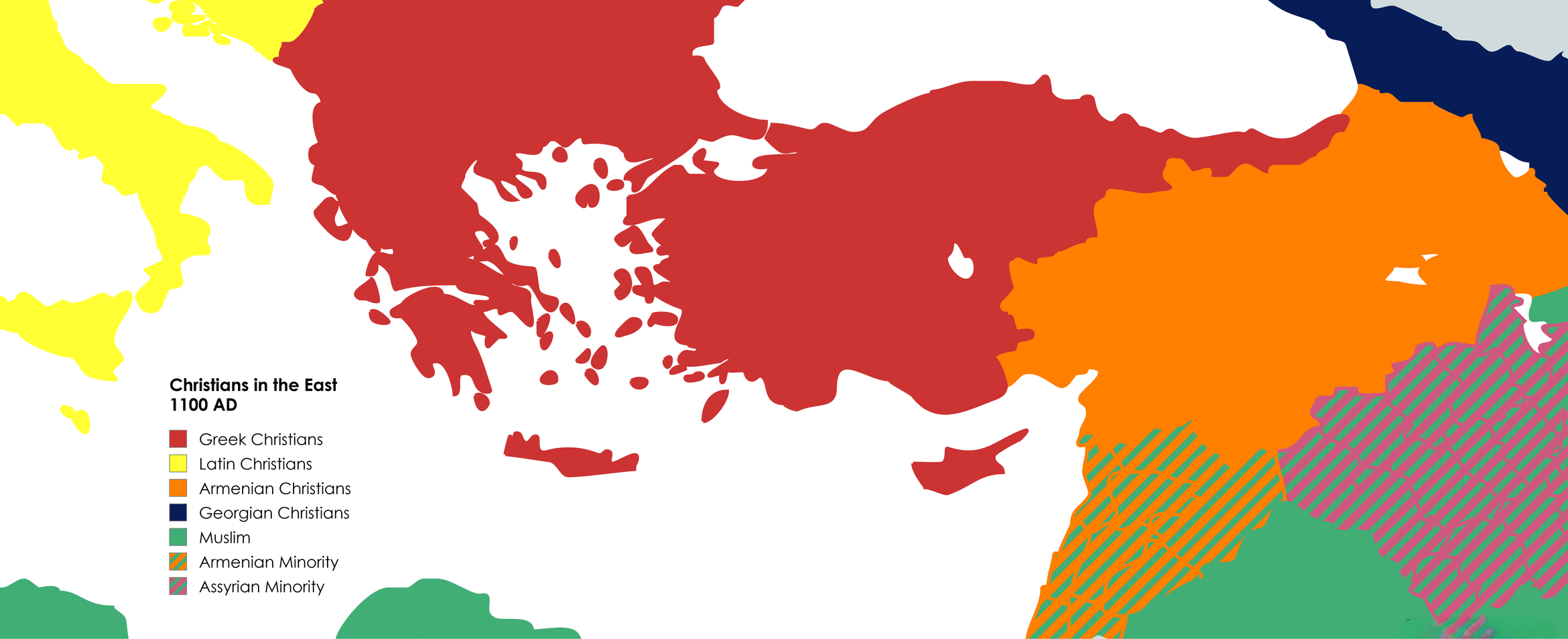
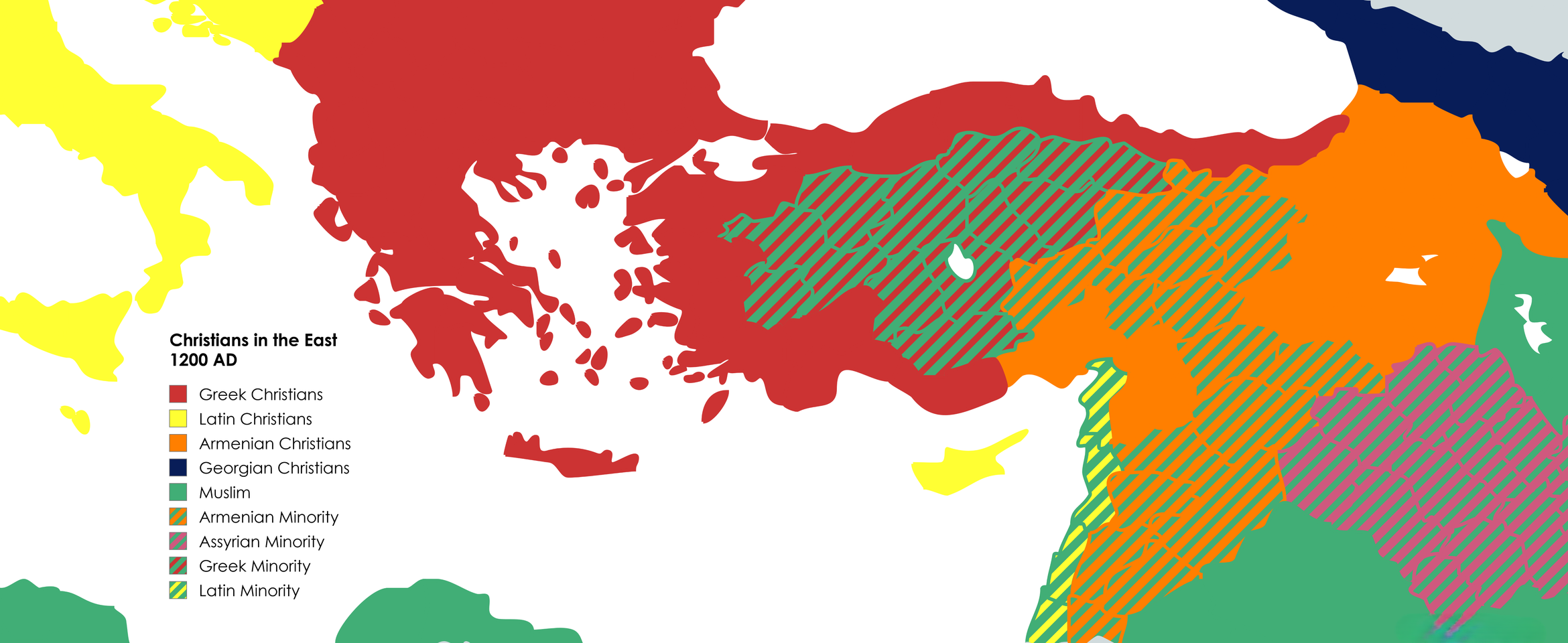
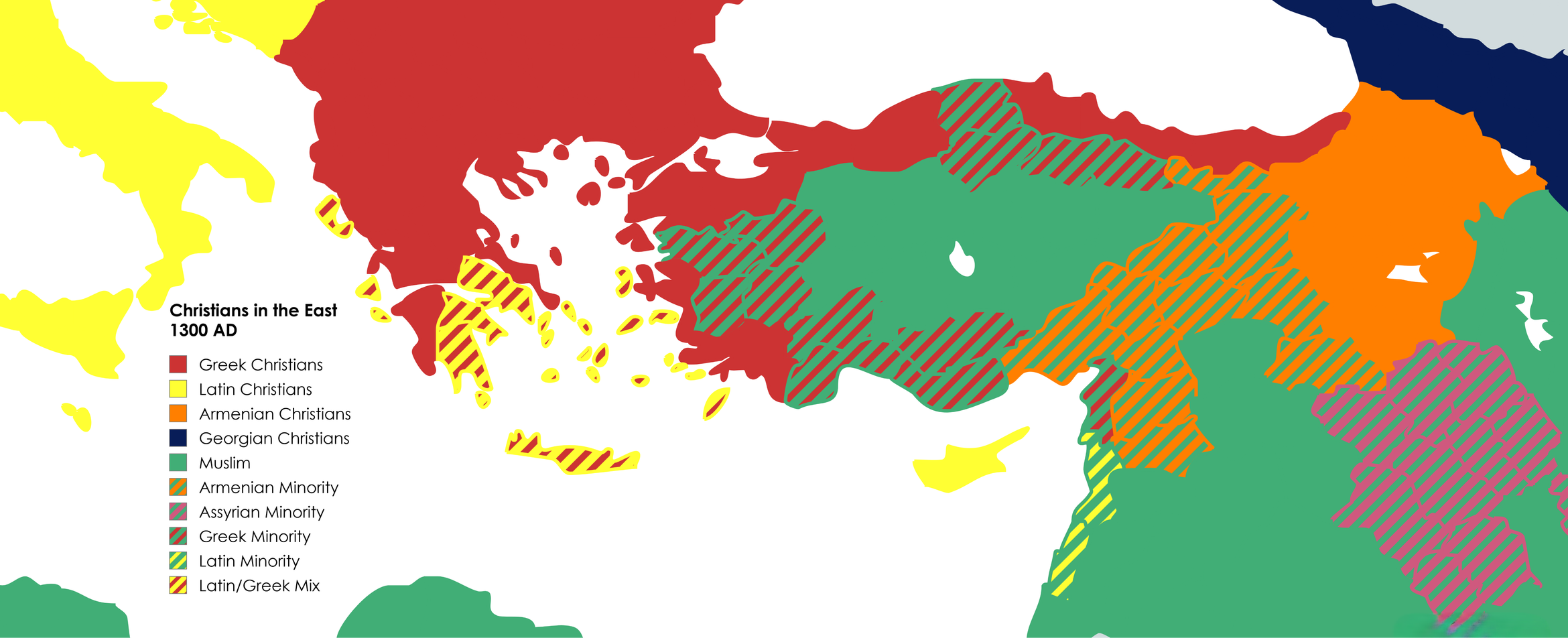
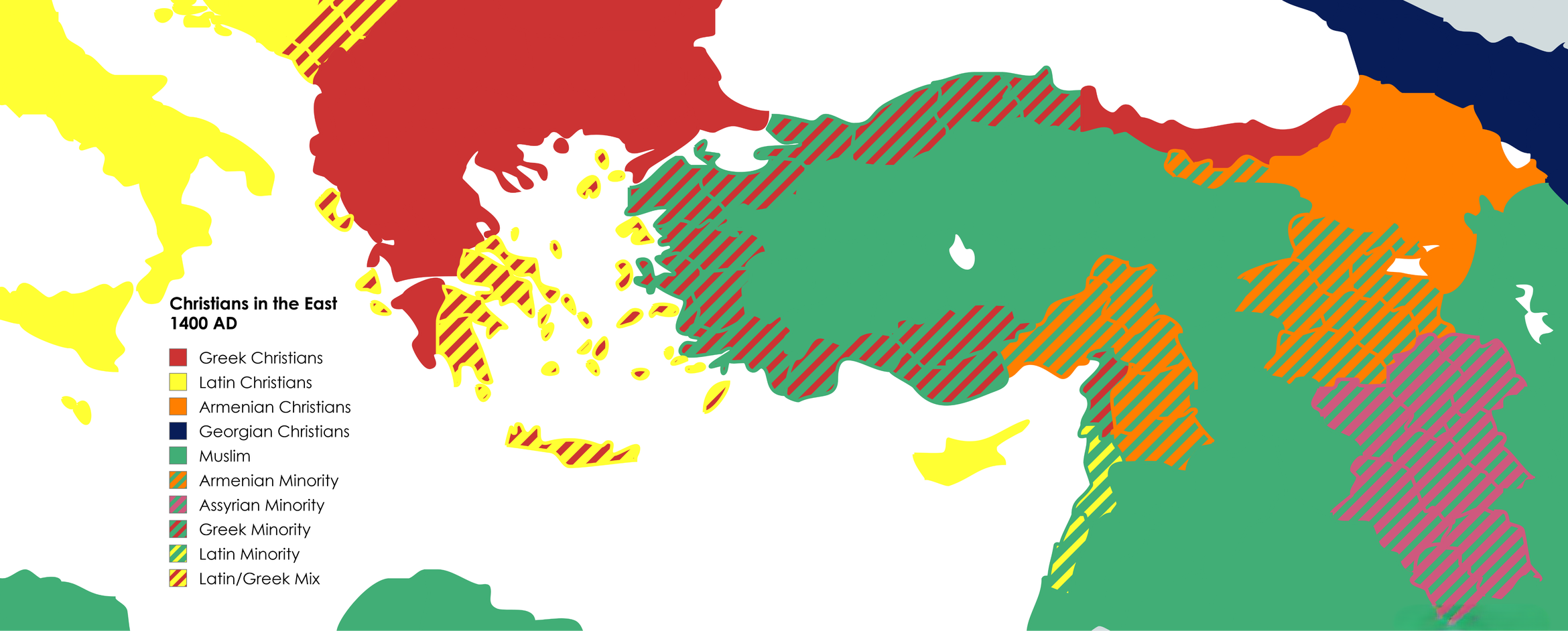
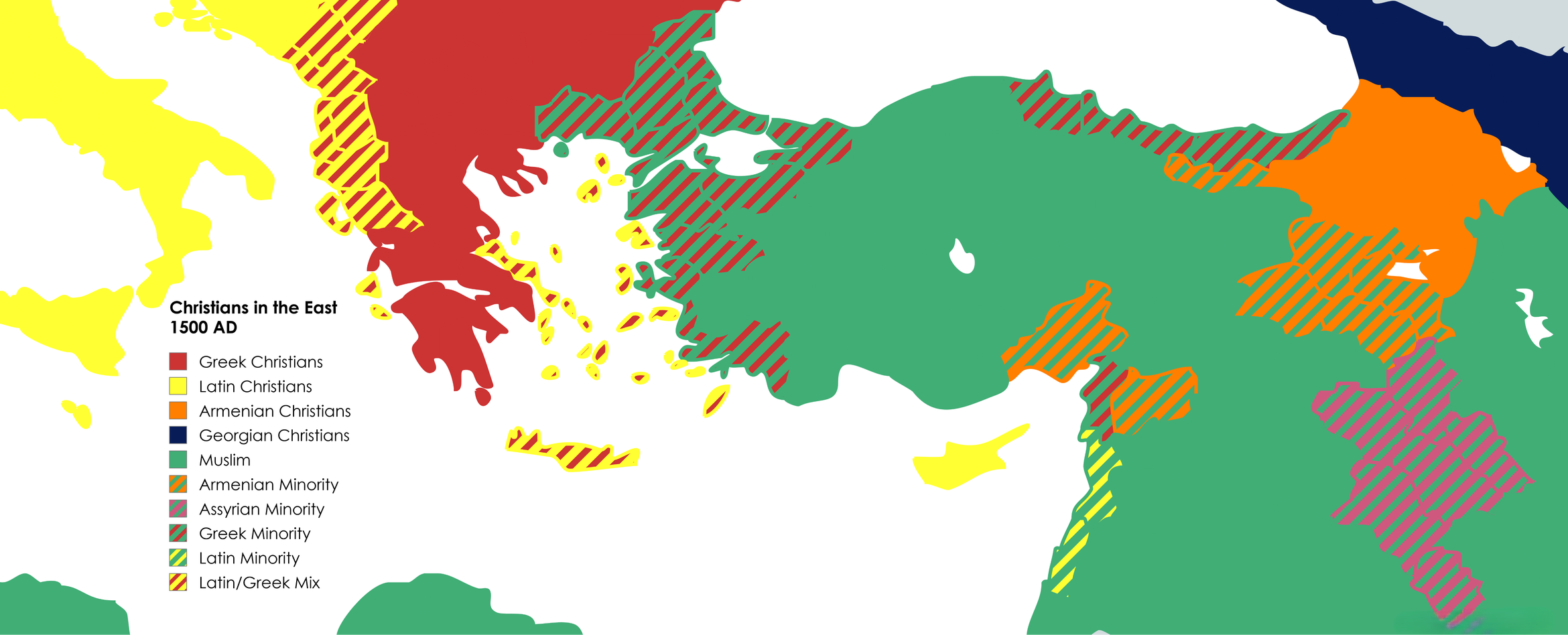
Reformation Era maps
Landscape of Christianity in 1600 AD
With the birth of the Counter-Reformation subsequent to the Council of Trent, as well as the birth of the Uniate Catholic Church in Kyiv, the denominational boundaries of churches would be cemented as remain largely untouched until the beginning of the 20th century. Scandinavian counties would maintain their National churches, as would England and Scotland. The French Catholic Church would remain in effect until 1905, even during the height of modernist apostasy of the 19th century.
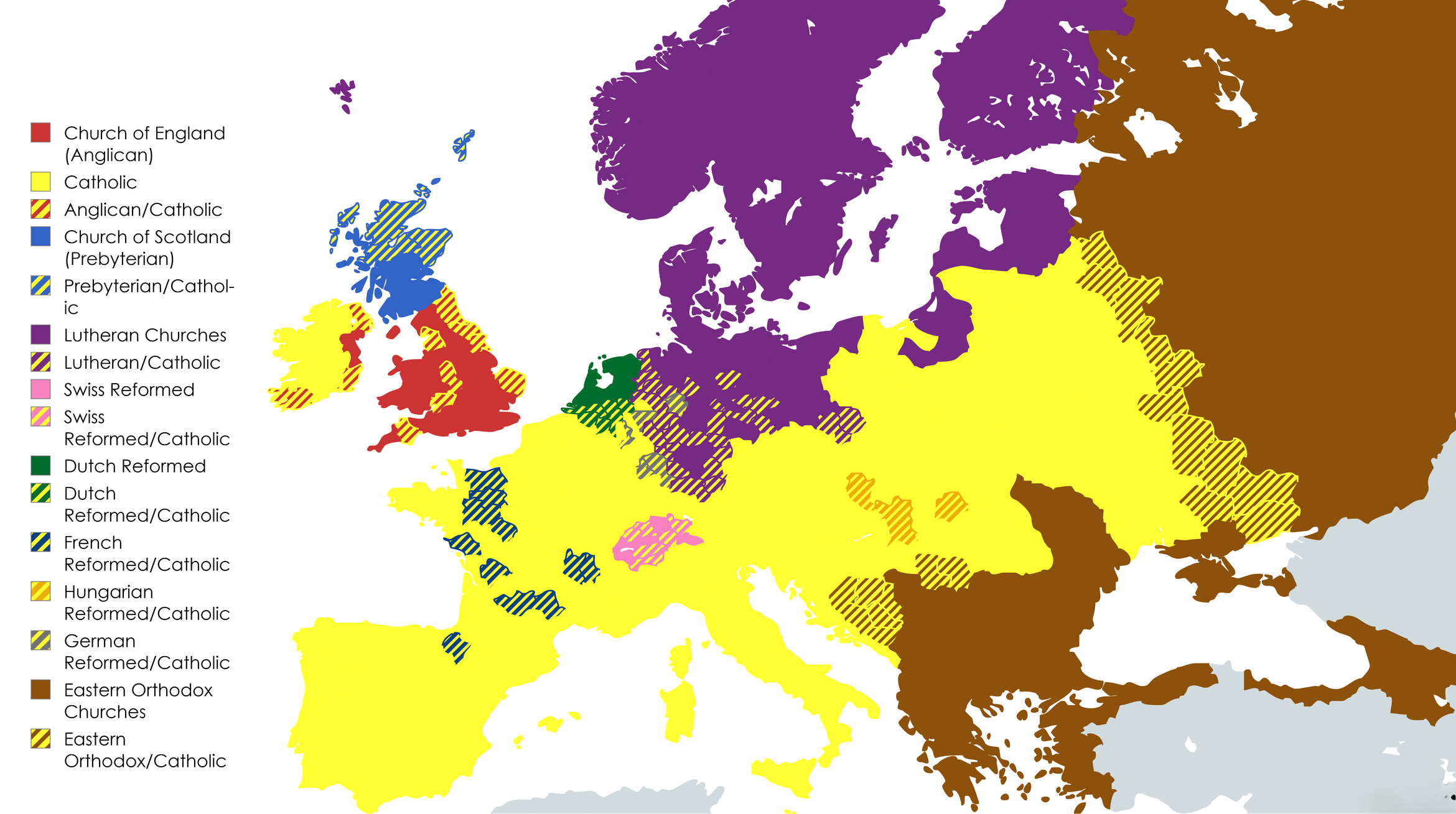
Post-modern ERA MAPS
Landscape of Christianity in 20th century Europe
While there was a limited sense of shift from the end of the 30 Year War in 1648 until the age of Napoleon, the 20th century did see substantial geographical changes to the geographical-religious landscape of Christianity in Europe. While the 21st century has blurred designations with the rise of Copts in Germany, the collapse of the Swiss and Dutch Reformed churches, the merger of the the German and Lutheran churches, the expulsion of German Lutherans from Eastern Europe, the expulsion of Greeks of Anatolia, the persecution of the church in former Soviet lands, and the establishment of Ireland and the removal of the English ascendancy.
